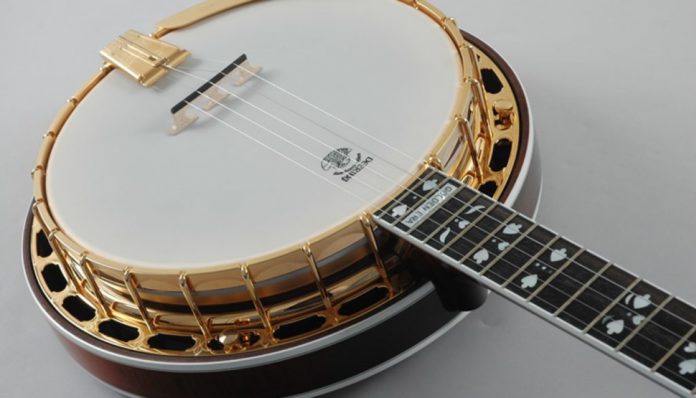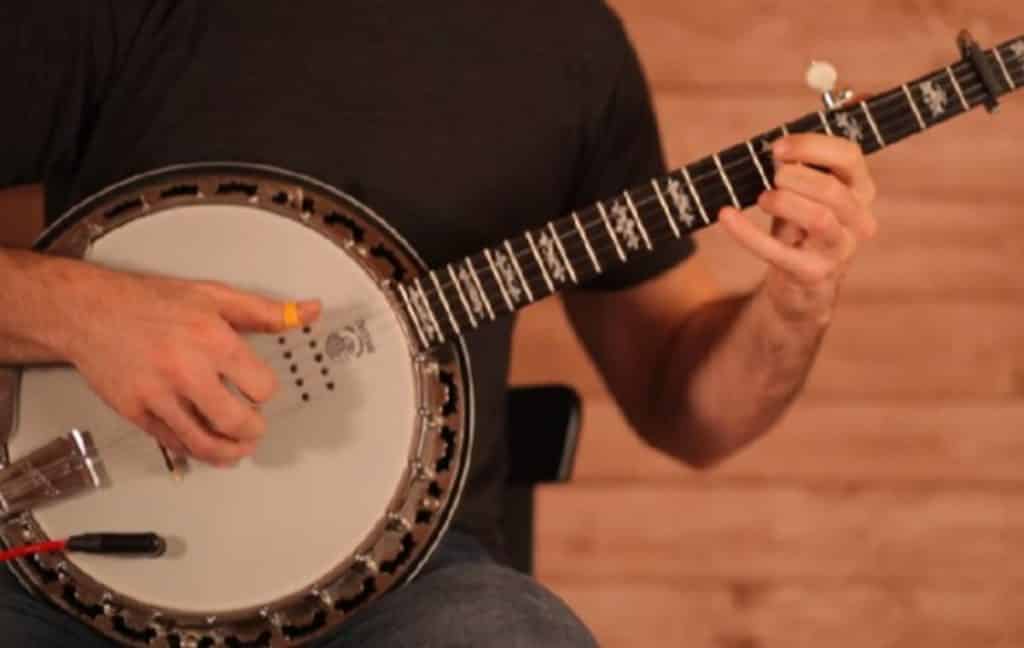
According to Wikipedia, “The banjo is a stringed musical instrument with a thin membrane stretched over a frame or cavity to form a resonator.” This instrument is related to folk music along with country music. Although there are few distinctions between playing the 5-string banjo and playing the guitar.
The variances do exist, making moving between the two challenges. The form of certain five-string banjo chords is the first of these variances. 5 string players utilize various methods when playing- containing picks, clawhammer style along with rapid 3-finger picking style.
How do you play a five-string banjo?
Here are all the basics of playing the banjo as described in the step-by-step guide. There you’ll find some expert opinion on top beginner banjo. If you are dealing with the dilemma of playing your banjo then following all of these steps may help you.
- Tune Your Banjo
You must first ensure that the banjo is in tune before beginning to play it. The length or tension of the string is changed by turning the tuner knobs on the banjo’s headstock, changing the tone (the tighter and shorter the string, the higher the pitch, and vice versa).
- Make use of an electronic tuner. A chromatic tuner is required for banjos, which may be ordered online or purchased at a local music store.
- If you have a piano or even a keyboard, perform the key of the string you’re tuning here on the piano. Spin the tuner counterclockwise if actually, the string is flat and clockwise.
Beginners may find this more challenging because they are effectively playing by ear. It is possible to know what kind of music the banjo should create when this is both in and out of tune. - For the 5-string banjo, the only typical standard tuning is Open G. (g, D, G, B, D) you can utilize an online banjo tuner to listen to what all these sound like.
- Adjust Your Body
Before you begin playing the banjo, it is difficult to maintain a clear posture. Sitting in an improper position may drastically change the sound of your music, grow the trouble, and raise your chances of injuring yourself.
- Maintain a slouching-free posture by keeping your shoulders up and back. This is real whether you’re seated or standing.
- Grip the banjo at a 45-degree angle preferably higher (most people hold the neck mostly in eleven, or one-o’clock position, as indicated in section 8 below), with such bottom side perpendicular to the ground or reaching higher along with you’ll see the chords plainly.
- Avoid over-gripping the neck, as a banjo’s neck is more sensitive than a guitar’s. I’m holding it a little too tightly.
- Utilize a banjo strap. A banjo is really heavy as well as longer than all the guitars. You demand the strap to lift the load of the banjo. When your left hand or your thumb is busy with handling the banjo, this will be very hard to fret. Then you’ll watch that this is trying to slide away.
- Get Your Hands in the Right Place
- When your left hand holds the neck, your right hand must rest well above the strings at the bridge.
- The pinky finger of your right hand along with the ring finger should be resting against the banjo’s head, just past the first string. If you’re having trouble holding your fingers in place while playing, consider putting a piece of double-stick tape on them.
- The picture above depicts guitar positioning on the left side. The strap, not your thumb, should carry the weight of a banjo. When you let go of both hands, the banjo neck should stay in place. Maintain a straight thumb on the ‘crown’ of the rear of the neck, then stretch your fingers around to the front fingerboard. While playing, keep your wrist in this posture.
- Learn How to Pick
When picking at the strings in the bluegrass manner, sweep your fingers downwards while plucking the strings with your nail or pick. Picking on the banjo is usually done with your thumb, index, and middle finger.
Some individuals pluck with all three fingers (excluding the pinky), but this is a more sophisticated technique that you should take into consideration. The ring and/or pinky fingers should be reshaped.
- Finger picks can be purchased to slip on the tips of your fingers. They look like metal guitar picks with rings on the ends. Which you put onto the ends of your plucking fingers to make a louder sound.
- It’s not essential to pull or push the strings to choose, so don’t bother. By lightly tapping each string with a lateral, the banjo will produce a pleasing sound, downward or upward stroke.
- Learn Some Basic Rolls
Rolls are a term which explains a basic banjo-picking pattern performed in eight notes. There you may find so many basic rolls that you can follow. You can play all these repetitive patterns with your right-hand pick just with a few strings.
- The common basic is a forward roll. You can play this by heating with all these following strings- 5-3-5-3-1-5-3. There are some of the numbers that indicate the string- as first string, third string, fifth string. There you may play eight notes.
- If you have learned all the basic rolls then jump into the more difficult rolls. You can also practice picking along with timing.
- Practice Your Rhythm
Even if you know how to play certain rolls, keeping time while doing so for a prolonged amount of time might be challenging. A metronome can help you improve your time. A metronome is a device which makes electrical clicking noises at a set, regular frequency. Keep one on as you practice, so you can assess your progress using the metronome’s timing. - Learn More Advanced Music
Explore learning some tunes after you feel you’ve mastered a few rolls. If you have a good track of timing and rhythm and are ready to move on. Don’t get discouraged if it takes a few weeks of practice before you can play anything recognizable.
- To figure out how to play renowned banjo tunes, look them up on the internet. There are also many music books available that will teach you how to master some fundamental tunes. This banjo book will be beneficial as banjo teachers.
- You may get music for many famous tunes by searching for banjo tabs. A tab for a banjo is similar to music in that it tells you which string number and fret produces the notes you require. To find the music for your song, type in the name of the song succeeded by the word “tab.”
- Practice Daily
The efficient part of studying banjo is to put all your efforts on a daily basis. If you want to become a pro, then you have to practice banjo for a minimum of thirty minutes a day. You may feel frustrated or discouraged at the beginning. However, over time you’ll enjoy playing this musical instrument on a regular basis and build your own playing style.
Easy Banjo Songs for Beginners- Picking in No Time!
There you’ll mention some popular banjo for beginners like you. The active listing also aids your learning the exact tuning. Hope you’ll enjoy banjo practice with all these songs.
● Cotton-Eyed Joe
● Hush Little Baby
● Ring of Fire
● She’ll Be Comin’ Round the Mountain
● Ground Speed
● Hot Corn, Cold Corn
● Wagon Wheel
● Blowing in the Wind
Wrapping it Up
The bass string on the banjo is shorter, there are several significant distinctions to be aware of. Whether you’re a novice or an experienced guitarist switching to banjo, you’ll need to learn the new tuning and chord forms. While there are thousands of cords, which are most generally utilized in popular music.
You’ll be able to acquire a TON of songs with these cords, and so are most of the 5th, 7th, and minor variations of each chord. Please see the rest of our Banjos’ work to learn more about one of our fav instruments!










